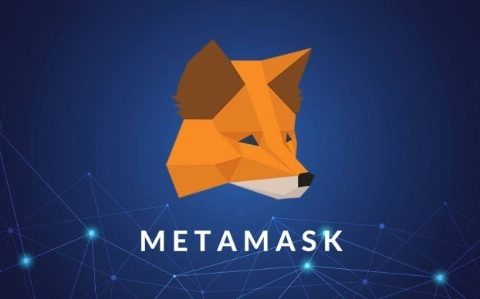
Are You an Aspiring App Developer Trying Your Luck with Android Development? You are already acquainted with Android SDK and DART but can’t decide which will best serve your projects. Technology changes constantly; therefore, we must remain up-to-date on available tools and frameworks.
In this blog post, we’ll compare Android SDK and DART and their advantages and disadvantages so you can make an informed decision.
The Key Difference Between Android SDK and DART
| Aspect | Android SDK | DART |
| Language | Java, Kotlin | DART |
| Development Framework | Native | Flutter Framework |
| Ecosystem | Mature | Growing, but smaller compared to Android |
| IDE Support | Android Studio, IntelliJ IDEA | Android Studio, IntelliJ IDEA |
| Performance | Good | Good |
| Learning Curve | Moderate to High | Moderate |
| Community Support | Large | Growing |
What Is Android SDK?
Google offers its Software Development Kit, or SDK, for Android app development. These tools include libraries, debuggers, emulators, and documentation needed to build Android applications using Java or Kotlin programming languages as their programming base.
Benefits of Android SDK
Vast Ecosystem
The Android SDK boasts an expansive ecosystem filled with libraries, tools, and resources designed to make creating feature-rich applications simpler for developers. This rich environment facilitates smoother development processes while offering solutions to challenges experienced during app creation.
Comprehensive Documentation
Google offers comprehensive documentation and tutorials for Android SDK that help developers learn its various capabilities more easily and implement various functionalities effectively. This documentation serves as an invaluable resource for both neophyte developers and experienced professionals alike.
Native Performance
Native Performance Apps developed using Android SDK typically demonstrate impressive native performance as they leverage its core functionality and ensure apps run seamlessly and efficiently, offering users a satisfying user experience.
Flexibility
Android SDK’s flexibility enables developers to craft an array of customized and integrated applications tailored specifically to specific customer requirements or evolving market trends, giving rise to cutting-edge apps with innovative applications for any purpose imaginable.
Large Community
With such an active community of developers and enthusiasts, getting support, troubleshooting issues, and accessing resources have become significantly simpler with Android SDK. Furthermore, this dynamic community encourages collaboration, knowledge-sharing, and continuous learning, thus enriching the overall development experience.
Cons of Android SDK
Steep Learning Curve
Learning Android SDK for beginners may prove to be challenging due to its intricate architecture and extensive documentation, making its adoption daunting for newcomers in mobile app development. Due to a steep learning curve, some may opt out of adopting Android SDK altogether.
Fragmentation
The Android ecosystem is fragmented, with devices of different device types and screen sizes running different OS versions, presenting unique challenges when trying to ensure consistent app performance across these different platforms.
Verbose Code
Verbose Code Writing Java, the primary programming language of Android SDK, often necessitates writing more lines of code compared to modern languages like Kotlin – leading to an unwieldy codebase and making maintenance and debugging of larger projects more challenging.
Performance Variability
While Android SDK provides native performance, application performance may depend on device specifications and optimization techniques employed by developers, thus introducing uncertainty across different devices and requiring extensive testing and optimization efforts by app creators.
Security Concerns
Android SDK apps developed according to best practices and security guidelines may be vulnerable to security vulnerabilities that pose a substantial risk to user data and privacy, necessitating stringent measures and regular updates to protect them from potential risks.
Benefits of DART
Single Codebase
DART provides developers with an effective single codebase solution, enabling them to write once and deploy it across Android, iOS, web, and desktop using the Flutter framework – thus saving both time and effort during development processes and maintaining consistency between platforms. This approach streamlines development efforts while maintaining consistency.
Hot Reload
Flutter’s Hot Reload is the functionality that gives developers instantaneous feedback about code changes they made, facilitating faster iteration and experimentation during development processes and increasing developer productivity. This rapid feedback loop accelerates development cycles significantly while simultaneously improving developer productivity.
Rich UI Experience
With Flutter’s collection of customizable widgets and components, developers can craft visually appealing user interfaces that create a compelling experience for end-users – giving Flutter users access to polished apps that resonate with audiences of any kind. This rich user experience also empowers developers with tools for crafting polished apps that resonate with audiences of any kind.
High Performance
DART provides high-performance execution and memory management, leading to smooth animations, quick rendering times, and responsive user interfaces for Flutter apps. These high-performance capabilities help Flutter deliver optimal user experiences across devices and scenarios.
Growing Community
Flutter and DART communities continue to rapidly expand as more developers adopt its platform and contribute to its ecosystem through libraries, packages, resources, and skills sharing – enriching development experience of Flutter development experience! This expanding ecosystem facilitates innovation, collaboration, and knowledge exchange as it fosters its vibrant environment of innovation, collaboration, and knowledge transfer within it.
Drawbacks of DART
Limited Ecosystem
Relative to Android SDK, the ecosystem for DART and Flutter development is relatively smaller, with fewer third-party libraries, tools, and resources available for developers. As a result of its limited size, finding solutions tailored specifically to individual requirements may prove more challenging; developers may need to rely more heavily on custom implementation.
Learning Curve
Although DART may be simpler to pick up than Java, developers still must acclimate themselves with the Flutter framework and its specific development paradigms if they wish to become proficient developers in DART or any new programming language. This may slow the initial development process down significantly while taking longer than expected for skill acquisition.
Integration Challenges
Integrating Flutter modules or libraries into existing native Android codebases may present unique difficulties that require extra time, energy, and expertise to bridge. Such difficulties could impede Flutter adoption within projects with limited cross-platform development experience or teams without sufficient staff expertise in cross-platform programming.
Platform Limitations
Although Flutter strives to offer an effortless cross-platform development experience, developers may encounter platform-specific limitations when developing apps for Android. As these differences require the implementation of unique solutions or workarounds, which could add further complications to the app creation process, Flutter may present its users with some restrictions that must be considered when building apps using Android OS.
Which is the Best Choice for Android App Development?
The choice between Android SDK and DART depends on various factors such as project requirements, developer expertise, and long-term goals.
Choose Android SDK
You need to develop native Android applications with access to platform-specific features and functionalities.
- You prefer a mature ecosystem with extensive documentation and community support.
- Your project requires deep integration with Google services and APIs.
Choose DART
- You aim to develop cross-platform applications for multiple platforms, including Android, iOS, web, and desktop.
- You value fast development cycles and real-time feedback with features like hot reload.
- You’re comfortable with a growing ecosystem and are excited about the potential of Flutter for future development.
Future Trends of Android App Development
Android app development holds exciting promise in the future due to technological developments and changing user preferences. Key trends expected to influence its direction include:
- Integration of AI and Machine Learning: By harnessing artificial intelligence and machine learning technology to develop smarter, more personalized Android apps that anticipate user needs and offer tailored experiences, AI/ML can create smarter experiences.
- 5G Technology: Tapping into its transformative potential is key to opening new possibilities like augmented reality, real-time gaming, and immersive multimedia experiences.
- Internet of Things (IoT) Connectivity: Integrating Android applications and IoT devices allows seamless communication and control among all connected smart devices, ranging from home appliances to wearable gadgets.
- Progressive Web Apps (PWAs): PWAs have proven an efficient method for providing app-like experiences via browser, expanding reach, accessibility, and engagement among users.
- Blockchain and Cryptocurrency: Investigating the uses of Blockchain technology and cryptocurrency within Android applications, from transaction security through decentralized finance (DeFi) and digital identity management to identity tracking services.
Wrapping Up
Android SDK and DART each present unique advantages that meet specific development needs in terms of Android app creation. Android SDK stands out with its comprehensive tooling, comprehensive documentation, and mature ecosystem, making it the go-to choice for developers dedicated to Android development alone.
DART utilizes the Flutter framework as its foundation for delivering contemporary cross-platform app development with swift iteration cycles and concise syntax. Ideal for rapid iteration cycles with minimized code duplication!
As Android app development advances, developers must keep pace with emerging trends and technologies to remain competitive in the market. From using Android SDK’s powerful capabilities to adopting DART/Flutter’s flexible features – choosing an effective tool depends on project needs, developer expertise, and long-term objectives.



